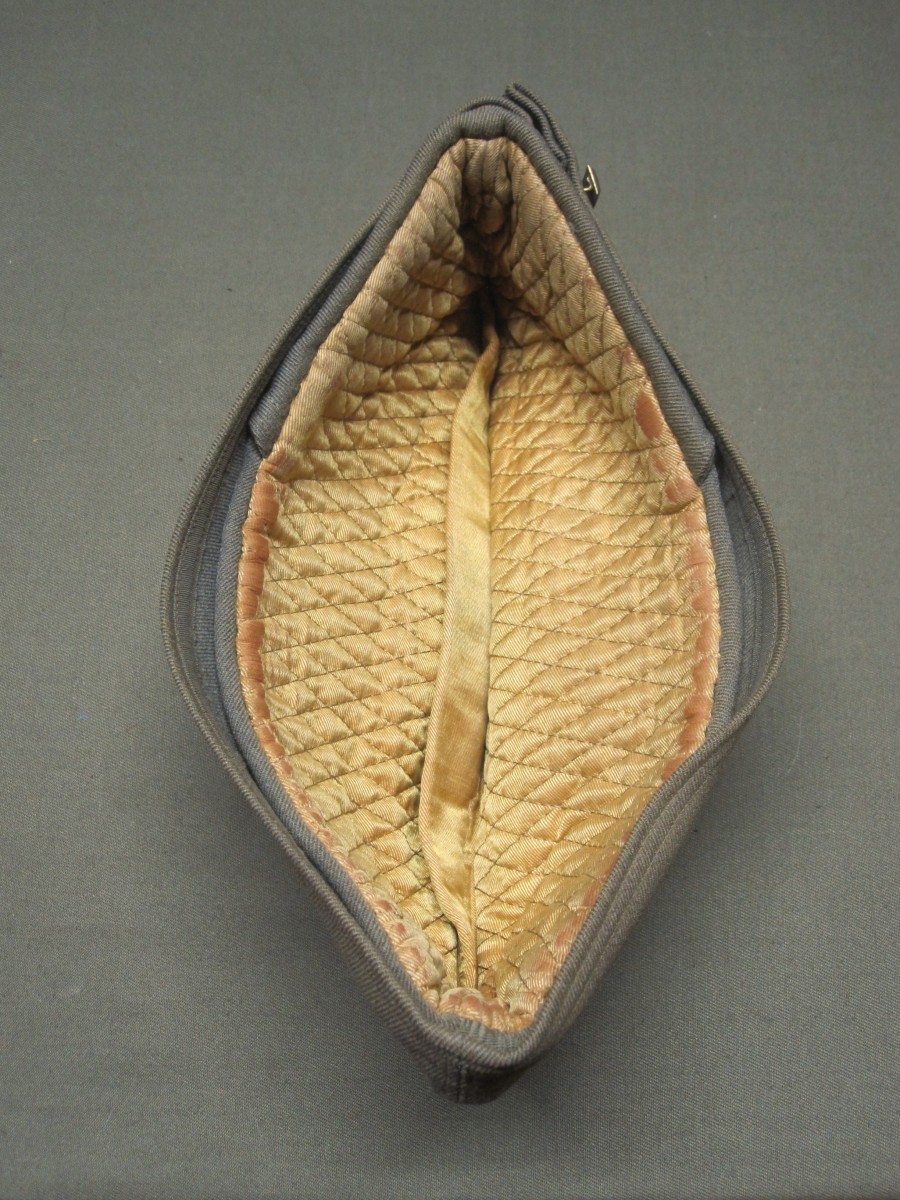Maurice Frances Graham, 50th Aero Squadon, A.E.F., located the exact position of the Lost Battalion (77th Division) under extreme enemy fire, and was awarded the DFC for his action.
Contact Us About This Product
Description
The overseas cap as the American referred to it, or the field service cap as the British called it, was a popular style favored by many American pilots during WWI. The cap was usually worn as pictured, but in cold weather could be turned down to block the cold around the ears and neck. A “hook and eye” are used on each side to pin up sides.
A pair of small US army buttons hold the sides together, and nearby, a J.R. Gaunt, London made 2nd lieutenant’s rank bar is fastened in place. The gaberdine wool now shows a good deal of age and wear; fading, small areas of mothing, and general wear taking place during the war and to this present time.
What makes it most identifiable as air service is the use of Green and Black piping placed on the arc on the brow of the cap.
The interior has a quilted golden yellow silk, with the Paris maker’s label, and Graham’s hand written identification in green ink, “Lieut./ M.F. Graham/ 50th Aero Sqd’n/ A.E.F. France.”
Lt. Graham joined the 50th Aero Squadron while in France in September of 1918. That unit flew the American built de Havilland D.H.4, sometimes called “flaming coffins,” yet this squadron used them to the utmost, producing two Medal of Honor recipients.
With only three weeks in action as a reconnaissance unit, they were called upon to locate an American 77th Division, that had been cut off in the Ardennes Forrest by the Germans. That unit is best known to history as the “Lost Battalion.” The first pilot and observer to attempt to locate the battalion were lieutenants, Goettler and Bleckley, who heroically flew quite low on two trips trying to make a map of the enemy positions, by drawing their fire, hoping in that way to determine the approximate position of the American infantry. Their plane and bodies having taken far too many bullet holes landed in a French held area. Goettler the pilot was dead, and Bleckley died very shortly after. These were the two MOHs credited to the 50th Aero.
Graham and his observer, James McCurdy undertook the same mission the following evening. Graham flew so low over the area, that the Germans were shooting down onto the plane from the hilltops while still taking on much ground fire. However, as badly shot up as they were, and with his observer wounded in the neck, the “Lost Battalion’s position was located.
I have included a print out of an article written by Lisa Sonne, entitled Mystery of the Missing Pilot (Google it). It contains more of his WWI exploits, post war career, and the tragic death of Graham in 1927 while flying an airmail flight.
A very historic cap, tied to one of the best known events of the Great War.
Additional information
| Weight | .75 lbs |
|---|












